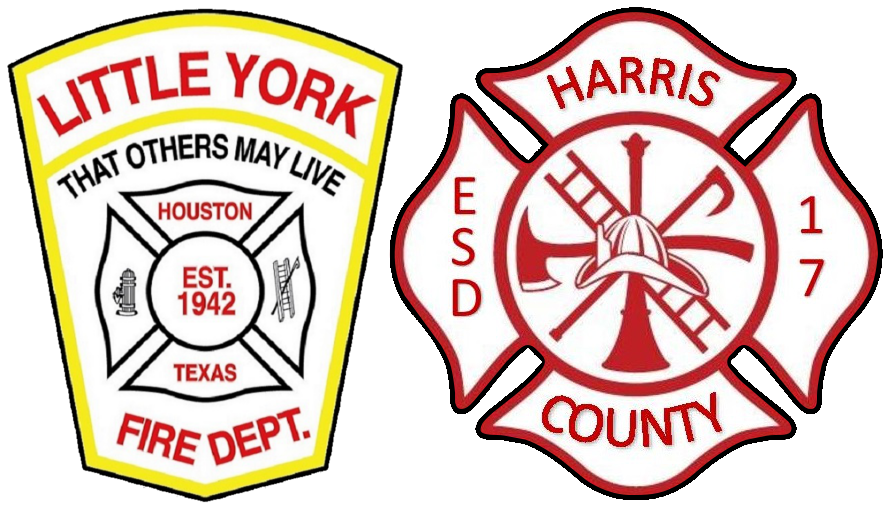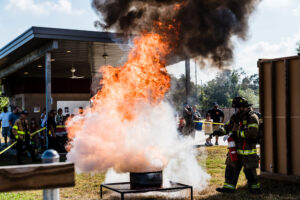Little York FD Firefighter Demo Proper Use of Fire Extinguishers
By Gemalie Perez, Little York FD Community Risk Reduction Coordinator
Knowledge and Training Are Key
Knowing how to use a fire extinguisher can help you act calmly and effectively in an emergency. Recently, our firefighters held a demonstration at the 2024 Little York FD Fire Fest to teach community members the PASS method and discuss extinguisher maintenance. These kinds of demonstrations not only help people learn how to handle fire extinguishers but also empower them to feel confident in their ability to protect themselves and others.
When it comes to fire safety, every second counts. One of the most effective tools you can have on hand to protect your home or workplace in the event of a fire is a fire extinguisher. Often overlooked, fire extinguishers can be the first line of defense against a small fire that might otherwise escalate into a dangerous blaze. Here’s why every household and business should have one—and how to use it properly.
Why Fire Extinguishers Are Essential
In an emergency, a fire extinguisher can allow you to contain a small fire before it spreads, protecting lives, property, and critical belongings. Fires can grow rapidly, doubling in size every 30 seconds. Fire extinguishers provide a way to act quickly, especially before the fire department arrives, when minutes are precious.
Beyond their practical function, fire extinguishers provide peace of mind. Knowing you have the right equipment to take action during an emergency can make you feel more secure and prepared in your home or workplace.
Choosing the Right Fire Extinguisher
Fire extinguishers come in various types, each designed for specific kinds of fires. Here’s a quick breakdown:
- Class A: For fires involving wood, paper, cloth, and other ordinary combustibles.
- Class B: For flammable liquids like oil, gasoline, and paint.
- Class C: For electrical fires, such as those involving appliances, wiring, and circuit breakers.
- Class D: For combustible metals, often used in industrial settings.
- Class K: For kitchen fires involving grease, oil, and fats (essential for homes and restaurants).
Most households and businesses will benefit from having an ABC extinguisher that can handle a variety of common fire types.
How to Use a Fire Extinguisher: The PASS Method
Using a fire extinguisher effectively is simple if you remember the PASS method:
- Pull the pin. This breaks the tamper seal and prepares the extinguisher for use.
- Aim low. Point the nozzle or hose at the base of the fire.
- Squeeze the handle slowly and evenly to release the extinguishing agent.
- Sweep from side to side, moving the nozzle back and forth until the fire is fully out.
By following these steps, you maximize the extinguisher’s effectiveness and increase your chances of stopping a small fire in its tracks.
Regular Maintenance and Accessibility
An extinguisher is only helpful if it’s in working order and easily accessible. Make sure it’s in a spot where everyone can reach it quickly. Check your extinguisher regularly to ensure it’s in good condition, and inspect the gauge to confirm it’s fully charged. Most extinguishers require an inspection at least once a year, so make it part of your fire safety routine.
Stay Safe and Be Prepared
While we hope you’ll never need to use a fire extinguisher, having one—and knowing how to use it—can make a life-saving difference. We encourage everyone to equip their home or workplace with the appropriate fire extinguisher, conduct regular checks, and know the basics of fire safety.
Stay safe, stay prepared, and let’s all work together to protect our community from the dangers of fire.
If you’d like to learn more about fire extinguisher safety or attend one of our upcoming demonstrations, please contact us. We’re here to help keep you safe!




